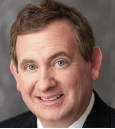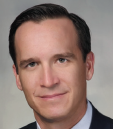 Tad Rivelle,
Tad Rivelle,
Chief Investment Officer—Fixed Income,
TCW
A Coming Winter of Discontent
In investing, as in life, timing can be everything. The cycles of the capital markets are as immutable as the seasons. Those who commit risk capital while the cycle is enjoying its “risk on” spring will prosper; those who avoided risk-taking during the spring would be well-advised not to do so as the autumn chill approaches. Unfortunately, there is precious little understanding of what drives financial and economic cycles.
Traditionally, there have been two narratives to explain the cycle. Recessions happened either because businesses over-expanded, creating an unwanted inventory build that needed to be worked down, or because consumers became exuberant and caused inflation, forcing the Fed to pull the punch bowl. But these narratives do not explain 2008, let alone 2000-02, 1998, 1994, or 1990.
An examination of deleveragings of the past 30 years provides the necessary guidance: we now live in an integrated global economy mirrored by a globalized financial system. This has meant the credit and business cycles have become almost the same. If capital markets are willing to extend the frontiers of credit one extra step and one more marginal loan can go to one more marginal borrower, we maintain growth. But once the high water mark in credit is reached, a de-leveraging builds momentum, bringing an economic downturn.
Economic variables are highly dependent upon the willingness of the capital markets to engage in lending activity that fuels a re-leveraging economy. The notion that high asset prices and low unemployment inoculate the economy from downturns is belied by history.
The ramifications for investors in the current cycle are clear. If you want to understand how “old” the cycle is, it is critical to judge the quality and durability of underwriting standards. With the ratio of asset prices to incomes nearly back to peak 2007 levels, and given the rapid erosion in debt underwriting standards, we view the cycle as sufficiently aged as to counsel caution. We have steadily reduced our exposure to rates and to risk-taking in credit with the expectation that a winter of higher rates, wider risk premia, and greater volatility lies ahead.
For more information on TCW please see our profile on page 74.
 Jason Brady, CFA,
Jason Brady, CFA,
Head of Taxable Fixed Income,
Thornburg Investment Management
Credit Diversity, Not Duration, Matters Most
As the Federal Reserve gears up to raise short-term interest rates for the first time in nearly a decade, market participants increasingly worry about the duration of their fixed income portfolios. Put simply, duration is the measure of the change in price of a bond or portfolio for a given change in the yield of that same bond or portfolio. However, due to the market obsession with the Fed’s imminent action, some portfolios have been marketed and bought on the basis of a “zero duration” to eliminate the fear of loss in a rising-rate environment.
While rates may rise, a “zero” or “negative” duration is not necessarily the most important feature of a resilient fixed income portfolio. Several decades ago, most fixed income instruments were fairly high quality, U.S. dollar-denominated bonds, movements of which were closely correlated with moves in U.S. Treasuries and, at the short end, the Federal Funds Target Rate. Investors could receive a significant real yield. In the 1990s, that real—after inflation—yield generally ranged around 3.5% to 4% for 10-year Treasuries. Today, with those same real yields around 0.50%, the risk/reward of high-quality fixed income is quite different. While those portfolios can and should remain an important part of any investor’s allocation, the diversity and dispersion in credit markets nowadays can help tremendously.
Executing effectively in the context of a broad mandate for providing income and total return, without depending on an individual asset class—be it high-yield corporates, asset-backed securities, mortgages, etc.—can be valuable. We combine those individual, diverse opportunities into a moderate risk, moderate reward portfolio that can solve a number of investor challenges. In addition, because many of those assets do not correlate highly with U.S. Treasuries, the portfolio as a whole can prove protective in a period of rising interest rates.
It’s the diversity of fixed income, not a single, easily manipulated statistic that matters most when rates rise. Investors would do well to review the outcomes of the two approaches in 2013, when the 10-year Treasury yield climbed nearly 120 basis points.
The views expressed by the portfolio manager reflect his professional opinion and should not be considered buy or sell recommendations. These views are subject to change.
For more information on Thornburg Investment Management please see our profile on page 74.








